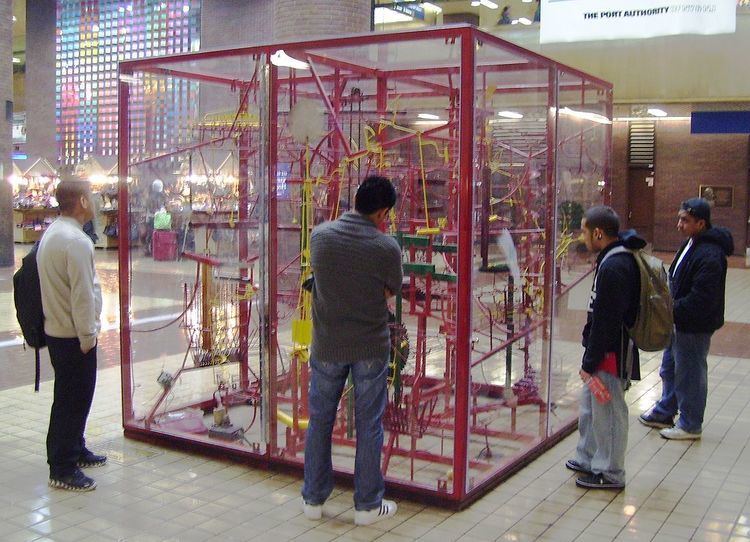 | ||
A rolling ball sculpture (sometimes referred to as a marble run, ball run, gravitram, kugelbahn, or rolling ball machine) is a form of kinetic art – an art form of that contains moving pieces – that specifically involves one or more rolling balls.
Contents
Characteristics
Rolling ball sculpture art typically includes rails or tracks made of metal, wood, plastic, or other material, and one or more balls or marbles that travel down the tracks. Ball types include, but are not limited to, steel, acrylic, wood and glass. Rolling ball sculptures are often described as being both busy and soothing at the same time. They are an artistic form of mechanical motion.
Rolling ball sculptures rarely use circular-cross-sectioned tubes for the runs; tubes can induce balls to spin in ways that can introduce unpredictable delays; because of this, most sculptures use parallel guide rails on either side of the ball.
The tallest rolling ball sculpture in the world, at 22 metres (72 ft) tall, is said to be the Energy Machine, located in the Hong Kong Science Museum in Hong Kong.
Toys and kits
Rolling ball sculptures, typically marketed as "marble runs" are commonly sold as children's toys worldwide. Unlike professional kinetic sculptures, however, their commercial counterparts are typically made of wood or plastic and feature small, interlocking pieces that can generate a large number of track configurations. More complicated add-ons, such as jumps, loops, trampolines, xylophone ramps and electronic triggers are also typical with more complex sets.
Examples of commercial rolling ball sculptures include Spacewarp from Bandai, Techno Ball, and Chaos Machine. Some hobbyists and artists also enjoy making the sculptures by themselves using wood, metal or plastic.
